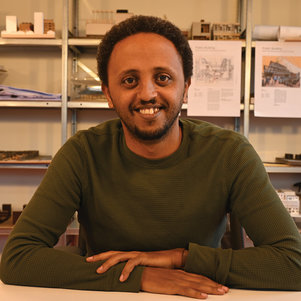Cities are not simply collections of buildings; they are primarily shaped by underlying social structures and the spaces that harbor them. "When urban planning proceeds only according to formal boundaries and ignores these kinds of 'cognitive' boundaries, you lose what makes a neighborhood," Anteneh Tola observes in his doctoral research.
Asked where within the city they are from, residents of the Ethiopian capital Addis Ababa would mention their "sefer," their "iddir," or in particular cases their “gebbi.” These terms from amharic - Ethiopia's most spoken language - are far more important than the administrative boundaries established by the government. It makes sense, because a sefer - once a designation for "military encampment" - represents the social group a person belongs to and a location collectively cognized by residents. This can be of similar place of origin from which residents migrated into the city, or occupational similarity.
The iddir is a kind of voluntary residents' association, which offers help in many ways. People who pay monthly contributions to an iddir need not worry in the event of bereavement, for example. Fellow members, mostly neighbors, set up tents and take care of the funeral. This self-organized social safety net is extremely important especially in poor neighborhoods. "When urban planning proceeds only according to formal boundaries and ignores these kinds of 'cognitive' boundaries, you lose what makes a neighborhood," says Anteneh Tola. "It is necessary to understand the construction of the sefer."
Anthropologist
Tola's dissertation focuses specifically on the Ethiopian capital of Addis Ababa. The rapid urbanization of this African metropolis is forcing radical choices. These particularly affect poor neighborhoods. The label of "slum" opens the door for complete demolition and replacement. But that also means the destruction of social structures, thus losing the soul of this type of neighborhood, Tola argues.
Like an anthropologist, he set out to find out more about these underlying patterns. To do so, he spoke with a large number of residents and collected their stories. They make it clear that the boundaries of neighborhoods run very differently in their minds than on official maps. Thus, the physical reality of the city is much more complex than the system of highways, building blocks and parks you see when driving through the city.
Besides sefer and iddir, the "gebbi" also play an important role as ‘building blocks’ of the sefer. These are compounds within which multiple households reside in housing units that circumscribe communal spaces. They contain communal areas with shared toilets, laundry, and kitchens, but also accommodate residents' meetings and social events such as funerals, weddings, and gatherings of the iddir.
People in general do want better homes, but they don't want to lose what binds them together.
Anteneh Tola
To analyze this complex reality of the city, Tola developed a "trinocular methodology" - triple viewing-lenses. This has three conceptual lenses: the cognitive borders of the sefer, the social relations of the iddir and spatial typologies of the gebbi. "By combining these viewing-lenses it is possible to make a nuanced interpretation of the urban complexity of any other city," says Tola. That can come in handy for urban redevelopment projects.
Isn't the same true of Dutch cities, in which sometimes entire city neighborhoods are sacrificed? "I think so," says Tola. "It is a universal fact that the social capital of neighborhoods is not determined by the buildings that are there. Before you decide top-down to replace them, you should map and identify these values. People in general do want better homes, but they don't want to lose what binds them together."
Published: September 2023
More information
On 25 September Anteneh Tola defends his PhD thesis 'Addis Ababa's Sefer, Iddir, and Gebbi: Nuanced Reading of Complex Urban Forms'. The thesis can be found here.

